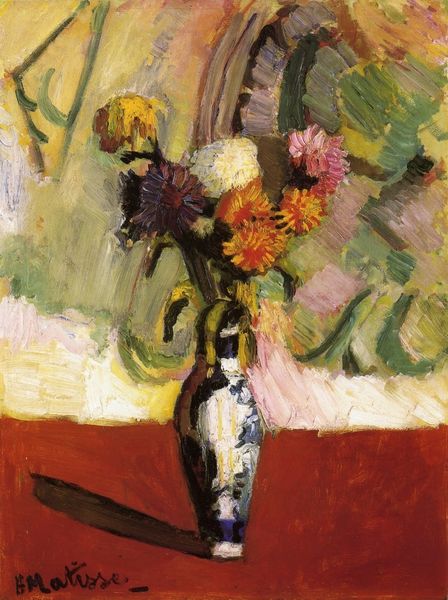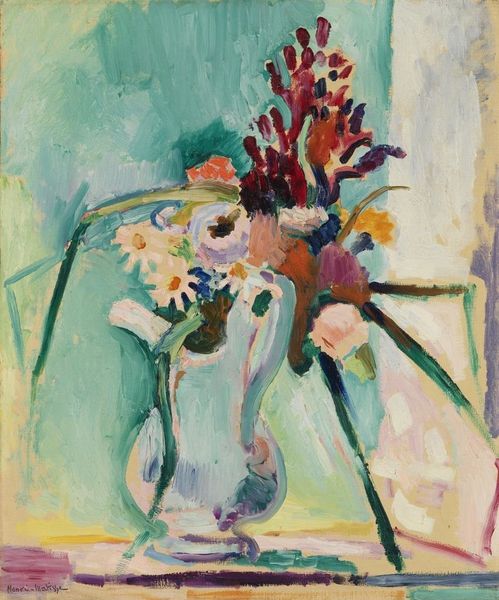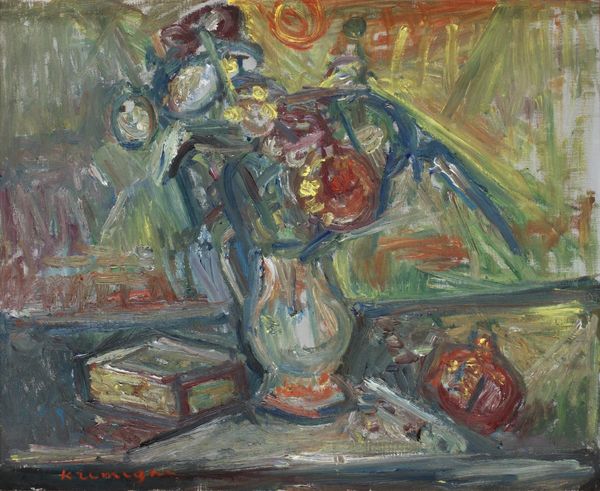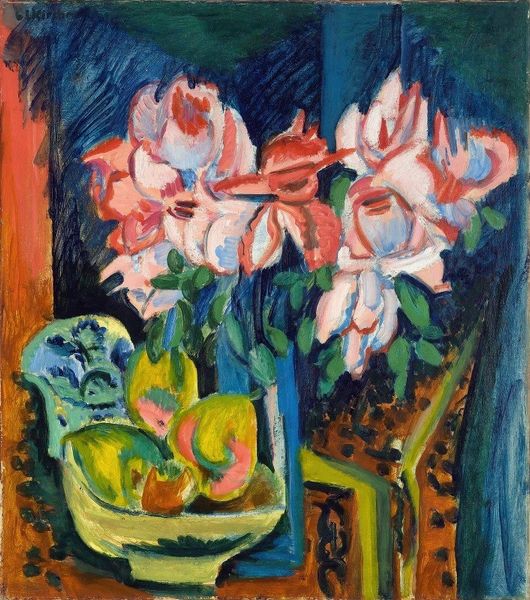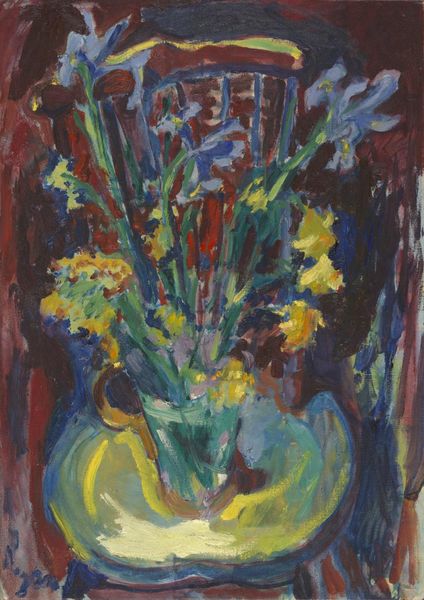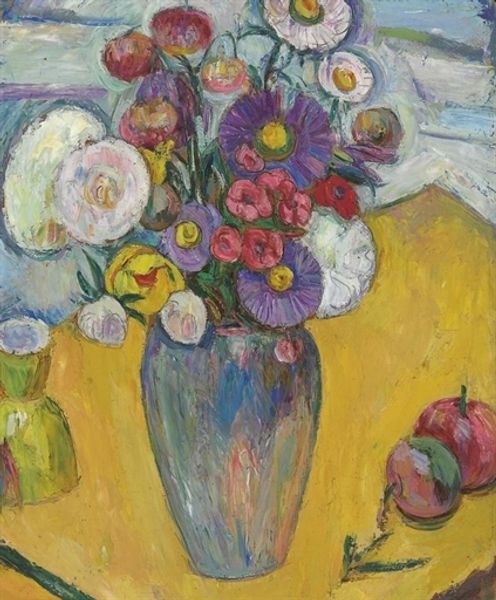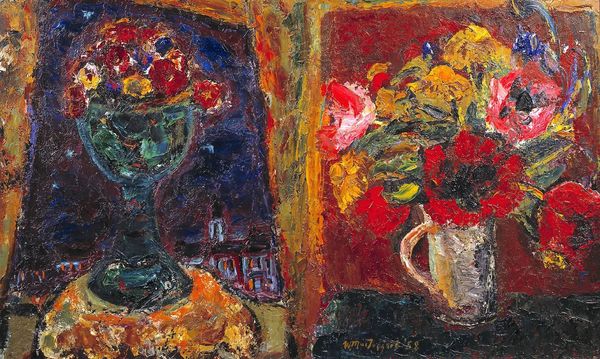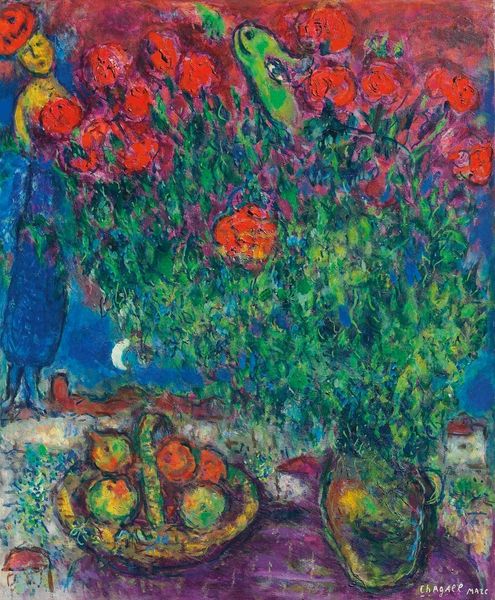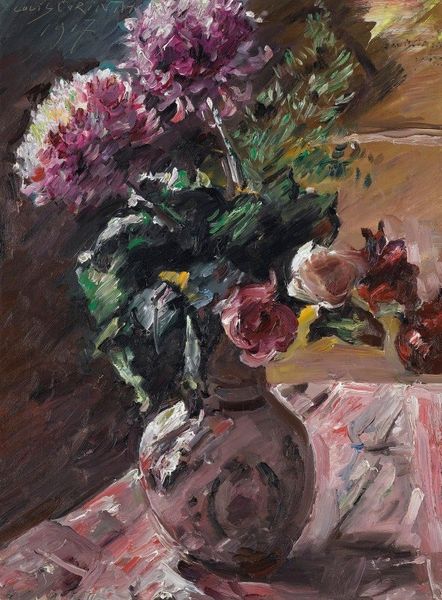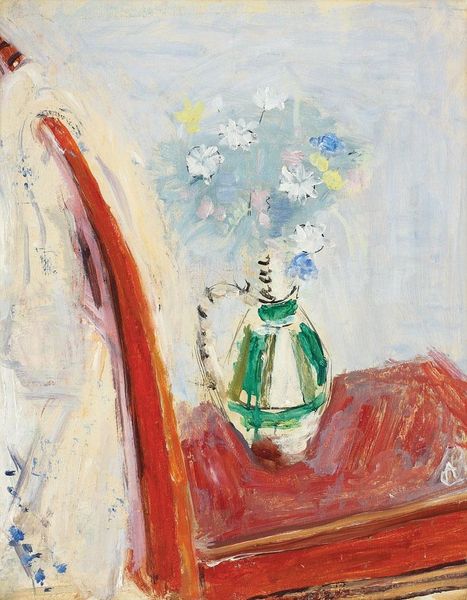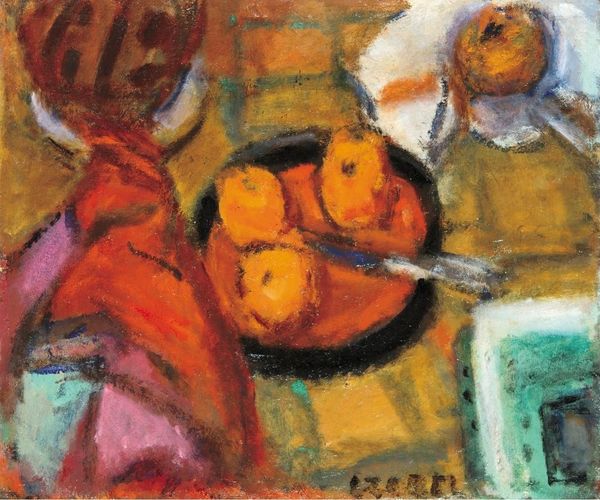
Dimensions: 61 x 50.2 cm
Copyright: Public domain
Curator: I’m struck by the melancholic air of this painting. The colors, especially those dark purples, almost feel bruised. What’s your immediate take? Editor: "Iris," painted in 1913 by Roderic O’Conor, sits within the Tate's collection. It’s an oil on canvas. It’s a still life, clearly, but… yes, there’s something a little… wilted about it all. It’s less vibrant celebration, more like a somber contemplation. Curator: The irises themselves, so often symbols of hope and eloquence, seem weighted down here. The way O'Conor has rendered them almost recalls memento mori, the vanitas tradition. A reflection on mortality. Editor: Interesting you say that. I’m looking at that smear of paint, almost blood-like, at the base of the vase and feeling like the whole painting is vibrating with this intense inner feeling. It's a very compressed emotional space. Curator: Exactly. Irises have these dual meanings – life and death. Royalty, mourning, faith, valor… So much baggage! And O'Conor was working in a time when the traditional symbolisms were being intensely interrogated by artists. This isn't just a painting of flowers. Editor: No, it isn’t. And you can see that conflict in the very application of paint. The background swirls and seethes, it’s pure post-impressionistic energy, but it doesn't lift the irises up; it almost consumes them. There’s anxiety there. Artistic anxiety, maybe even societal. Curator: Perhaps. There is also a sense of defiance. Remember, O'Conor placed himself outside of the established art world, gravitating toward the avant-garde circle in Brittany. Maybe these drooping blooms are a statement, a rejection of conventional beauty. Editor: Possibly! I do love that the window provides a vista onto… what? A riot of color, a field? Even that is obscured, tantalizingly out of reach. It reinforces that interiority we discussed. A contained, almost stifled expression. Curator: It truly makes me consider the burdens of representation itself. Are we seeing the flower, or the weight of cultural expectation we’ve placed on it over centuries? Editor: Precisely. O’Conor doesn't let the flower simply be; he imbues it with a feeling, a question. It’s rather powerful in its subtle way. Curator: It is that – a challenging little jewel of introspection. Editor: A melancholy bloom, beautifully rendered.
Comments
No comments
Be the first to comment and join the conversation on the ultimate creative platform.
